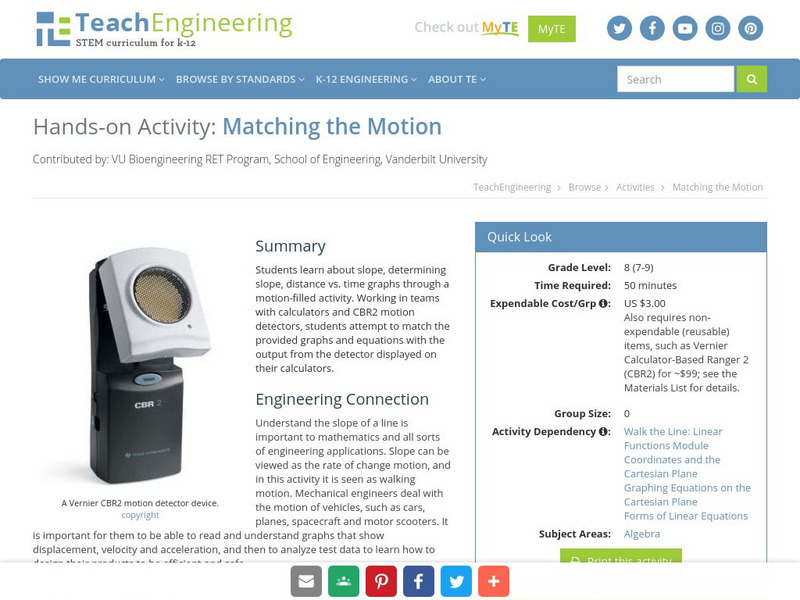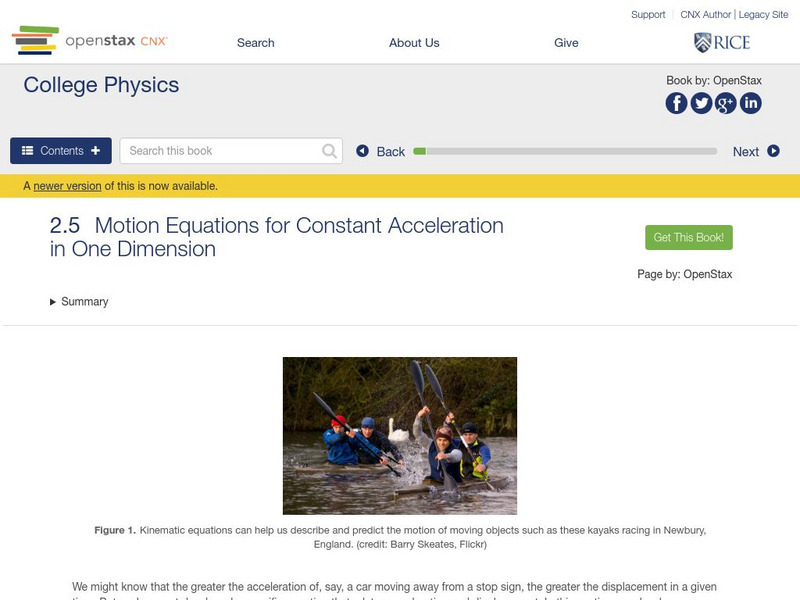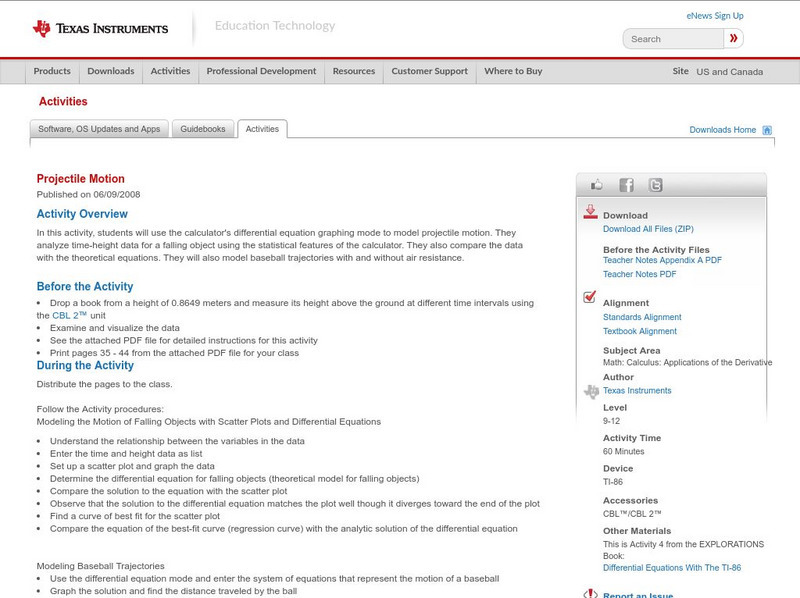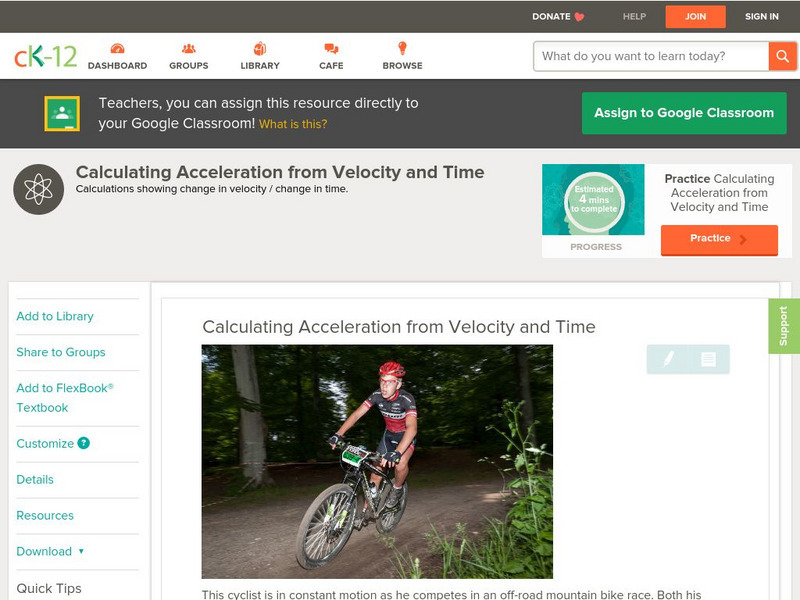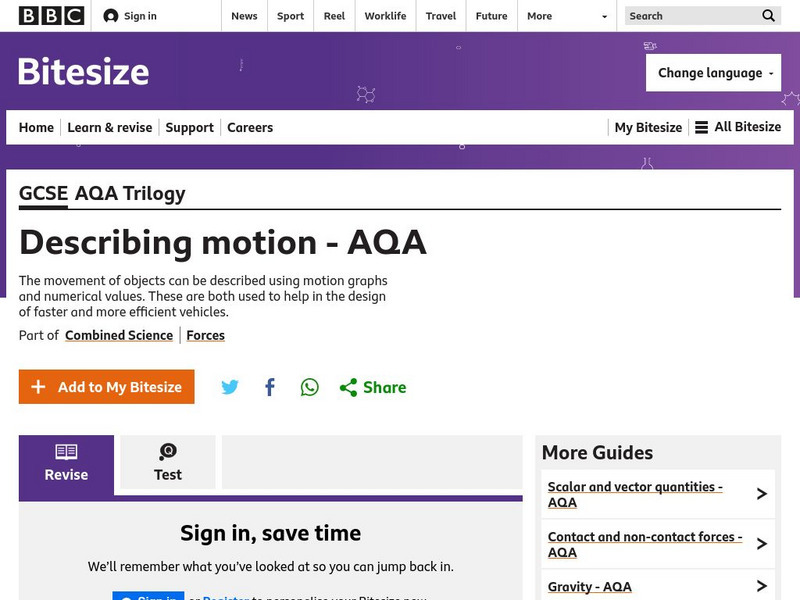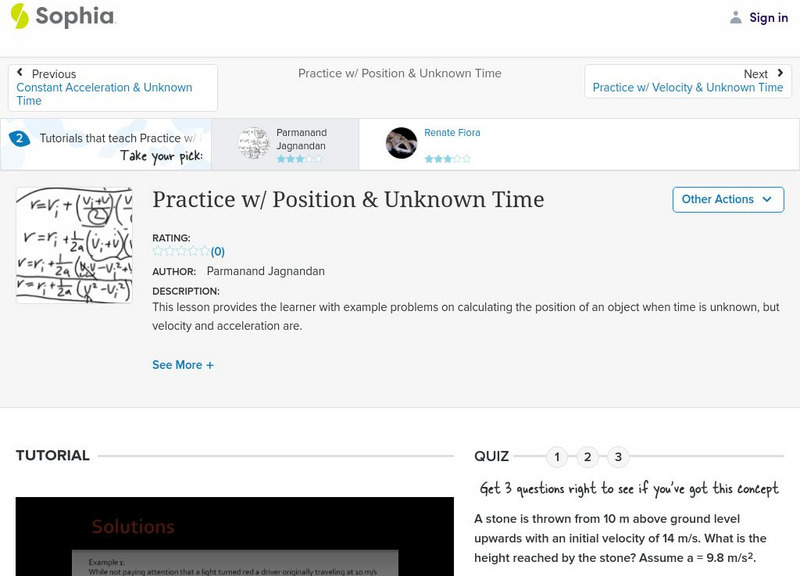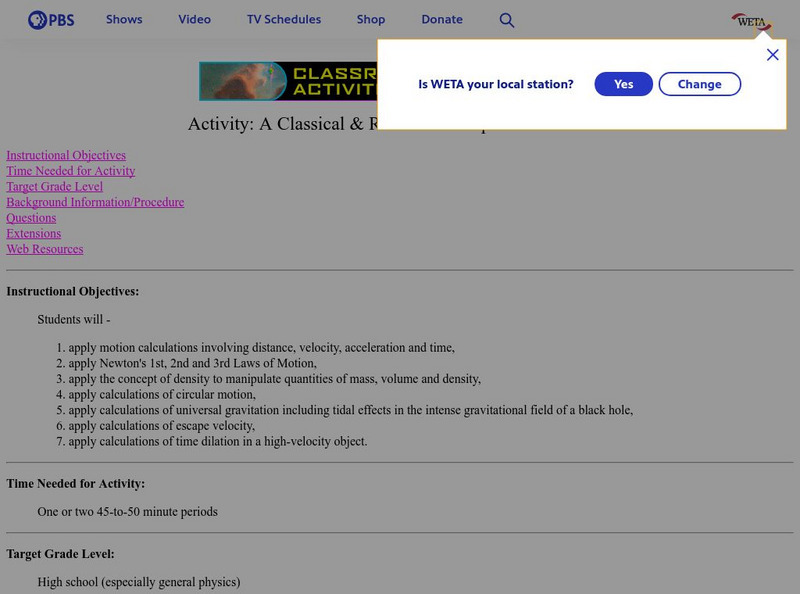Curated OER
Good Vibrations
Students demonstrate sound waves and make changes in the waves
resulting in changes in pitch. Students associate changes in pitch in various "musical instruments"with size and shape and the sound waves they produce.
Curated OER
Mass & Velocity Effect
Young scholars, after reading the explanation given below, use FoilSim to complete the activity to fulfill the specifications of a given airfoil and then plot and interpret graphs.
TeachEngineering
Teach Engineering: Matching the Motion
Students learn about slope, determining slope, distance vs. time graphs through a motion-filled activity. Working in teams with calculators and CBL motion detectors, students attempt to match the provided graphs and equations with the...
Texas Education Agency
Texas Gateway: Motion Equations for Constant Acceleration in One Dimension
By the end of this section, you will be able to do the following: Calculate displacement of an object that is not accelerating, given initial position and velocity; Calculate final velocity of an accelerating object, given initial...
OpenStax
Open Stax: Physics: Motion Equations for Constant Acceleration in One Dimension
In this interactive module, students will calculate displacement of an object that is not accelerating, given initial position and velocity. They will also calculate final velocity of an accelerating object, given initial velocity,...
Science Education Resource Center at Carleton College
Serc: Investigating Motion: Calculating and Graphing Students Walking Speed
In this activity students will collect and analyze data of their walking speed. They will compare their speed to an outside speed walker. They will determine their speed every 20 meters up to 100 meters. They will complete five trials to...
BBC
Bbc: Gcse Bitesize: Motion
This lesson focuses on motion including definitions, how to calculate the change in velocity and the average acceleration, and a link to an assessment.
Texas Instruments
Texas Instruments: Projectile Motion
In this activity, students can use the calculator's differential equation graphing mode to model projectile motion. They analyze time-height data for a falling object using the statistical features of the calculator. They also compare...
Science Education Resource Center at Carleton College
Serc: Investigating Calculating the Effect of Mass, Length and Displacement
In this physics lab activity students investigate how mass, length and angular displacement affect the period of a simple pendulum. Students control variables, testing one variable at a time, using manual techniques (stopwatch, human...
CK-12 Foundation
Ck 12: Episd: Position Time Graphs
[Free Registration/Login may be required to access all resource tools.] Understand how to evaluate data presented in graphs based on speed and velocity calculations.
CK-12 Foundation
Ck 12: Physical Science: Position Time Graphs
[Free Registration/Login may be required to access all resource tools.] How motion and speed can be represented by a distance-time graph and how average speed can be calculated from it.
CK-12 Foundation
Ck 12: Phys. Science: Calculating Acceleration From Velocity and Time
[Free Registration/Login may be required to access all resource tools.] How to calculate average acceleration and the SI unit for acceleration.
BBC
Bbc: Gcse Bitesize: Motion
This lesson focuses on how to calculate average speed and distance traveled. It also explains how to convert different units of measure and provides a link to an assessment.
BBC
Bbc: Gcse Bitesize: Describing Motion Aqa
This lesson focuses on Distance-time graphs; the gradient of a distance-time graph represents the speed of an object.
Texas Instruments
Texas Instruments: Slippery Slope Activity: Math & Science in Motion
This activity serves as a follow-up to Activity 6 in the Explorations book, Math and Science in Motion: Activities for Middle School by Chris Brueningsen, Elisa Brueningsen, and Bill Bower (Texas Instruments Incorporated, 1997). Students...
Alabama Learning Exchange
Alex: Motion in One Dimension
This hands-on exercise allows students to view and calculate the various factors involved in one-dimensional motion. Students will use remote control vehicles to illustrate the linear motion. Students will use the information gathered...
Sophia Learning
Sophia: Practice W/ Position & Unknown Time: Lesson 1
This lesson provides the learner with example problems on calculating the position of an object when time is unknown, but velocity and acceleration are. It is 1 of 2 in the series titled "Practice w/ Position & Unknown Time."
PBS
Pbs: A Classical and Relativistic Trip to a Black Hole
This PBS site is a classroom activity that takes a trip to a black hole. Students apply calculations on distance, velocity, acceleration, time, circular motion, density, and more.
Physics Classroom
The Physics Classroom: Momentum and Collisions: Cart and Brick Interactive
Students analyze a collision between a moving cart and a dropped brick that lands on top of it. They use position-time data to determine the pre- and post-collision speeds of the cart and the brick. The individual momentum values of the...
Science Education Resource Center at Carleton College
Serc: Student Analysis: Determine the Acceleration of a Toy Car
For this activity, learners measure the displacement and elapsed time of a moving toy car using a direct measurement video with an embedded frame counter. They then calculate average and final velocity, and the average acceleration, and...
TeachEngineering
Teach Engineering: A Shot Under Pressure
Students use their understanding of projectile physics and fluid dynamics to find the water pressure in water guns. By measuring the range of the water jets, they are able to calculate the theoretical pressure. Students create graphs to...
Physics Aviary
Physics Aviary: Practice Problems: Car Stopping Distance
Students must calculate the time it takes for a car to come to a rapid stop and the distance the car covers when stopping.
Science Education Resource Center at Carleton College
Serc: Newton's Second Law: How Does Acceleration Change With Varying Forces?
In this lab activity, young scholars investigate the effects of changing force on the acceleration of a lab cart testing Newton's Second Law of Motion. They will use distance and time to calculate velocity and create a graph representing...
Physics Aviary
Physics Aviary: Satellite Lab
This lab is designed to allow students to explore different aspects of satellite motion. Students can vary the mass of the satellite, the orbital radius of the satellite and the body that the satellite is orbiting. Students can measure...


